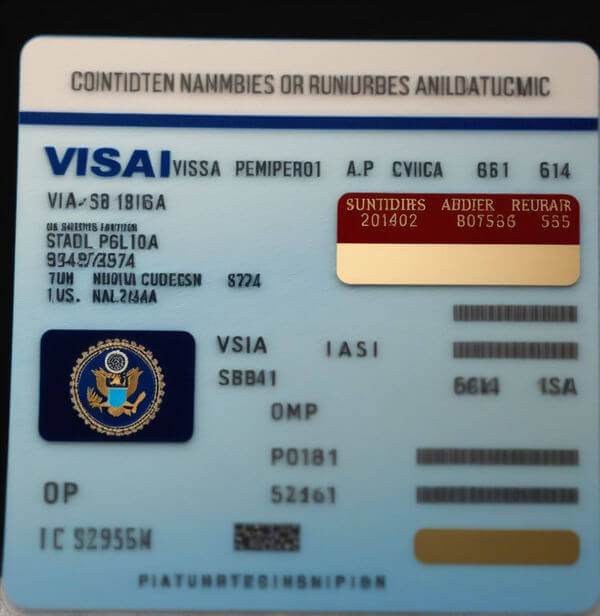
Have you ever wondered why finding specific details on your U.S. visa can be challenging? One key detail, the visa number, also referred to as the visa foil number, is crucial for various administrative processes. This number is typically printed in red and found on the bottom right side of newer visa documents. Generally, the visa number consists of eight numeric characters, but occasionally, it may start with a single letter followed by seven numeric characters.
If you're unsure whether you've identified the correct number, it's often helpful to consult an immigration expert or the issuing authority to confirm. This proactive step can prevent potential issues in your travel or residency applications, ensuring a smoother process in managing your status.
Understanding the Placement and Role of the Visa Number on U.S. Visas
The U.S. Department of State has periodically adjusted the placement of the visa number on visa documents. This number is essential for travelers entering the United States, as it is used by Customs and Border Protection officers at ports of entry to verify authorization to enter the country. For those holding nonimmigrant visas, such as B-2 visitor or F-1 student visas, the visa number is temporary and specific to the duration of the approved stay. In contrast, the visa number on immigrant visas, commonly referred to as green cards, is permanent.
Identifying the correct location of your visa number and understanding its significance can facilitate a smoother entry process into the United States. It is also crucial for correctly filling out related immigration paperwork and ensuring compliance with U.S. immigration regulations. If you are ever in doubt about your visa number or its implications, seeking clarification from immigration officials or consulting an immigration attorney can help avoid potential entry delays or issues with legal status adjustments.
Key Elements and Information Found on U.S. Visas
U.S. visas are detailed documents that include several important pieces of information, crucial for identification and processing at entry points.
Here's what you can typically expect to find on a U.S. visa:
- Issuing Port Name: The U.S. embassy or consulate where the visa was issued.
- Visa Holder’s Last Name
- Visa Holder’s First Name
- Sex: Represented by 'F' for female or 'M' for male.
- Date of Birth
- Nationality
- Passport Number
- Visa Type: Describes the visa category.
- Entries: Denotes the allowable number of entries into the U.S., marked as 'S' for single or 'M' for multiple.
- Issuing Date: The date on which the visa was issued.
- Expiration Date: Indicates when the visa will expire and no longer be valid for entry.
- Annotations: Notes made by U.S. embassy adjudicators.
- Immigrant Visa Number Availability: Refers to the limited annual quota of immigrant visas (green cards) as dictated by U.S. immigration law. The availability of these visa numbers can affect the wait time significantly, even after an I-130 petition is approved, often resulting in several years' delay before issuance.
For those seeking a family-based immigrant visa, a U.S. citizen or permanent resident must file Form I-130, Petition for Alien Relative. This is the initial step in securing a visa number under the quota system, which is essential for the immigration process.
With this information, you're better equipped to understand and navigate the complexities of your U.S. visa; best of luck in your travels and immigration endeavors!

